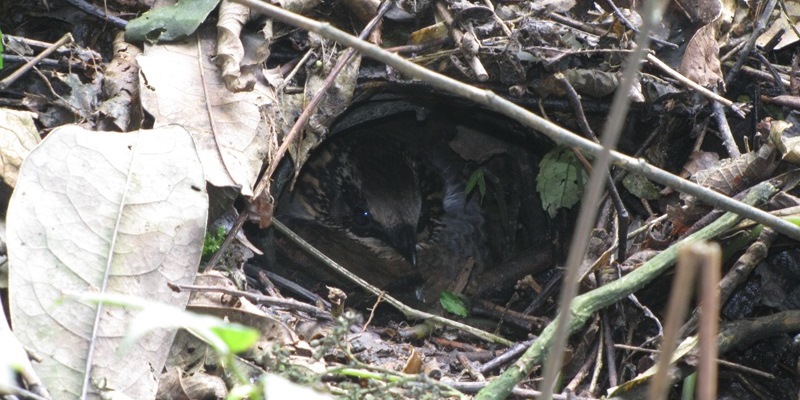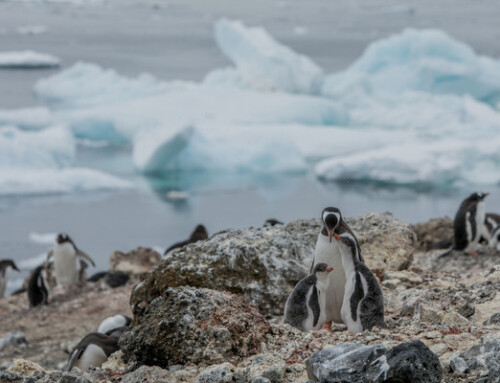Unusual incubation behaviour and embryonic tolerance of hypothermia in the Sichuan Partridge
LINKED PAPER
Unusual incubation behaviour and embryonic tolerance of hypothermia in the Sichuan Partridge (Arborophila rufipectus). Fu, Y.Q., Dai, B., Wen, L.Y., Chen, B.P., Dowell, S.D., & Zhang, Z.W. 2017. Journal of Ornithology. DOI: 10.1007/s10336-016-1422-7. VIEW
The Laojunshan Nature Reserve in Sichuan, China was established in 2001 to protect the endangered Sichuan Partridge, Arborophila rufipectus. We had noticed that the partridge seemed to nest near to forest trails (Fig. 1), and the female partridges (who are the sole incubators) were spending an unusually long time away from their nests during the incubation period, leading to fears of egg chilling and poor productivity. During incubation, it is assumed that birds restrict their foraging activities as much as possible in order to avoid embryonic hypothermia (Carey 1980; Hafthorn 1988). In most species of birds, the optimal temperature for embryo development is between 35.5°C and 38.5°C, and development is suspended below 26°C, which is known as the physiological zero temperature (PZT) (Webb 1987; Haftorn 1988). As this reserve is thought to hold around 15-20% of the world population of Sichuan partridge, we were very concerned that increased disturbance from visitors might result in their eggs experiencing prolonged periods below the PZT, leading to reduced breeding success. With the help of research funding from the National Natural Science Foundation of China (31272330) and support from Chester Zoo (UK), we decided to use temperature data loggers to take a closer look at what was happening.

Temperature data loggers were placed inside an artificial egg in each nest to record the egg temperature during incubation. In addition, infrared cameras were placed about a metre away from nests to monitor the behaviour of the female. Female partridges were found to incubate eggs alone, and typically take one long incubation recess of 4.5 ± 1.2 hr (mean ± SD) per day (Fig.2). They left the nests at 0736 am (± 50 min) and returned at 1206 pm (± 70 min).

The egg temperature results were intriguing. Sichuan Partridge eggs experienced an average of 4.2 hours each day below PZT. This is considerably more than that recorded for most bird species and would normally lead to death of the embryo. Despite this, hatching success was 88.4%, which is very close to the average hatchability rate for birds in general (89.1%). On closer scrutiny we noticed a difference between nests close to busy forest trails and those in quieter areas of the forest, with the hens nesting in more disturbed areas spending longer off their nests than those in quieter areas. To compensate, the incubation period for nests in areas of high disturbance was about two days longer than the period for nests in undisturbed areas, but hatching success was not reduced.
It is possible that nests located close to forest trails gain some advantage through disturbance along trails reducing predation. At the very least, this research has demonstrated the resilience of the Sichuan Partridge to disturbance along forest trails and shown that increased visitor numbers to the reserve will not necessarily lead to reduced breeding success of the key species that the reserve is there to protect. This is important information that will help to inform the management of visitors in the reserve.
During the breeding seasons of Sichuan Partridge in our study site, the ambient temperature was ~13.2°C (it can even fall below zero in the early spring). We speculate that the embryonic tolerance of hypothermia by Sichuan Partridge might be strengthened under long periodic cold acclimation. For Sichuan Partridges, the ability to withstand embryonic hypothermia has great adaptive significance in cold montane environments because it would alleviate the conflict between incubation and self-maintenance by females.
References
Carey, C. 1980. The ecology of avian incubation. Bioscience 30: 819–824. VIEW
Haftorn, S. 1988. Incubating female passerines do not let the egg temperature fall below the ‘physiological zero temperature’ during their absences from the nest. Ornis Scand 19: 97–110. VIEW
Webb, D.R. 1987. Thermal tolerance of avian embryos: a review. Condor 89: 874–898. VIEW
Image credit
Featured image: Incubating female of the Sichuan Partridge, Arborophila rufipectus © Yi-Qiang Fu
If you want to write about your research in #theBOUblog, then please see here.





